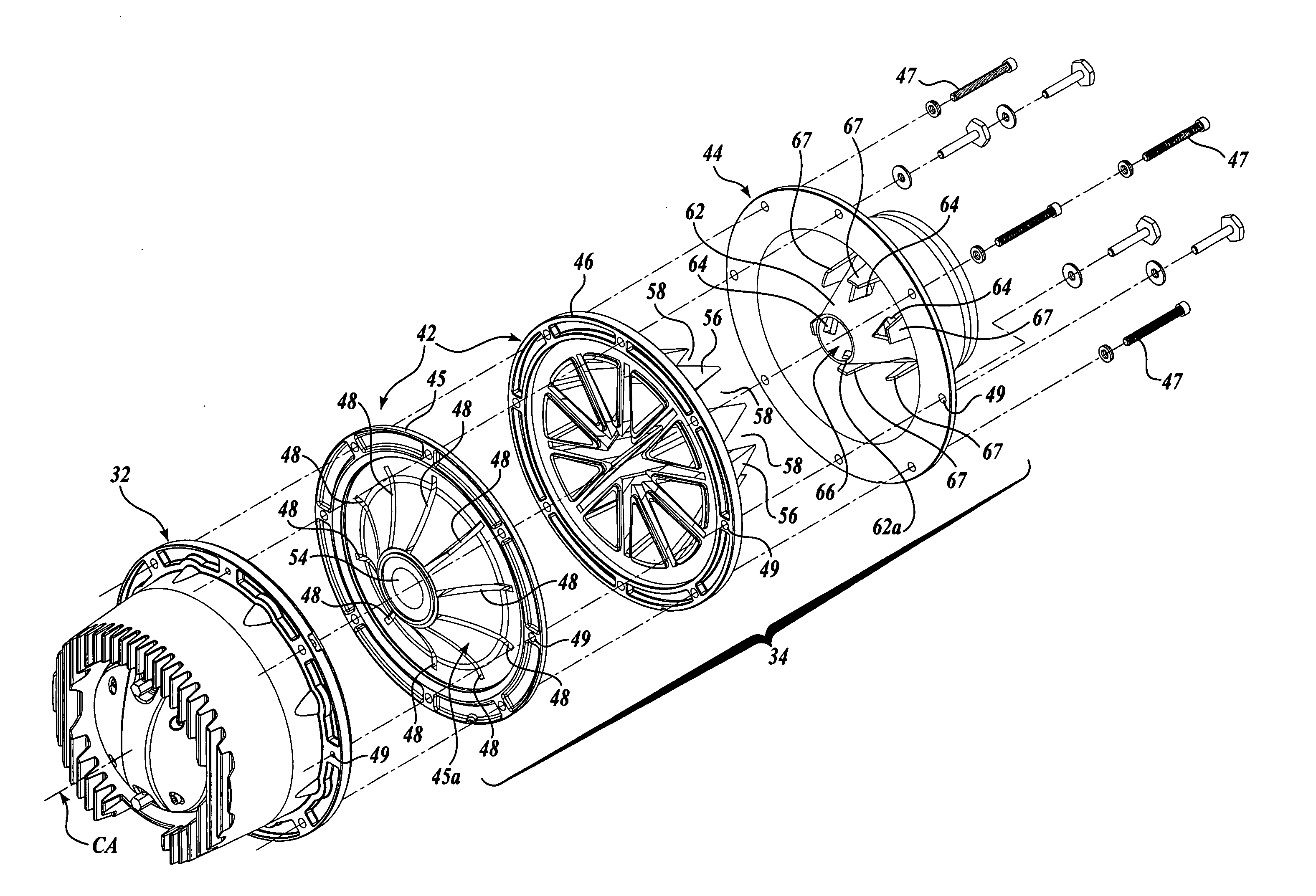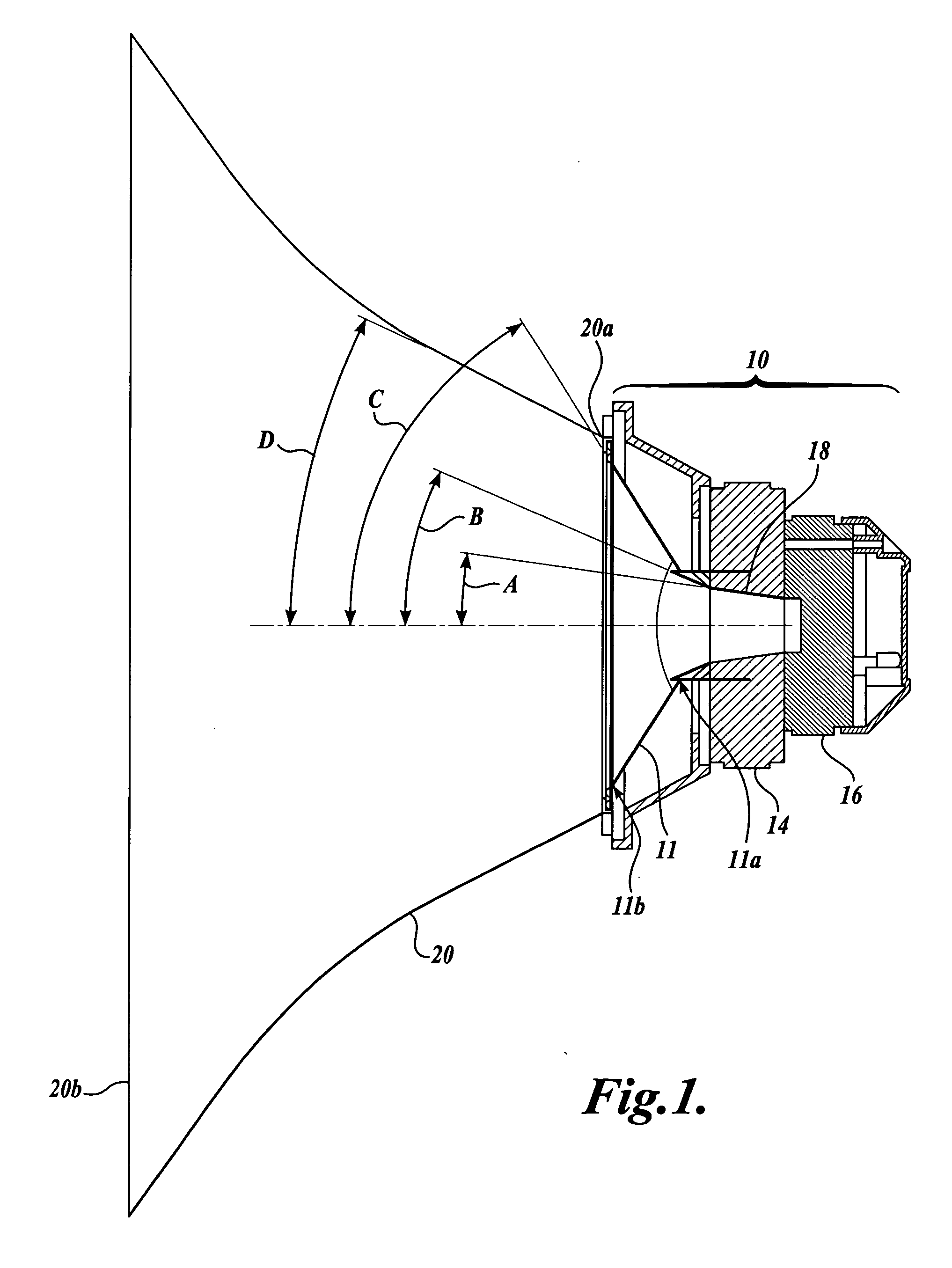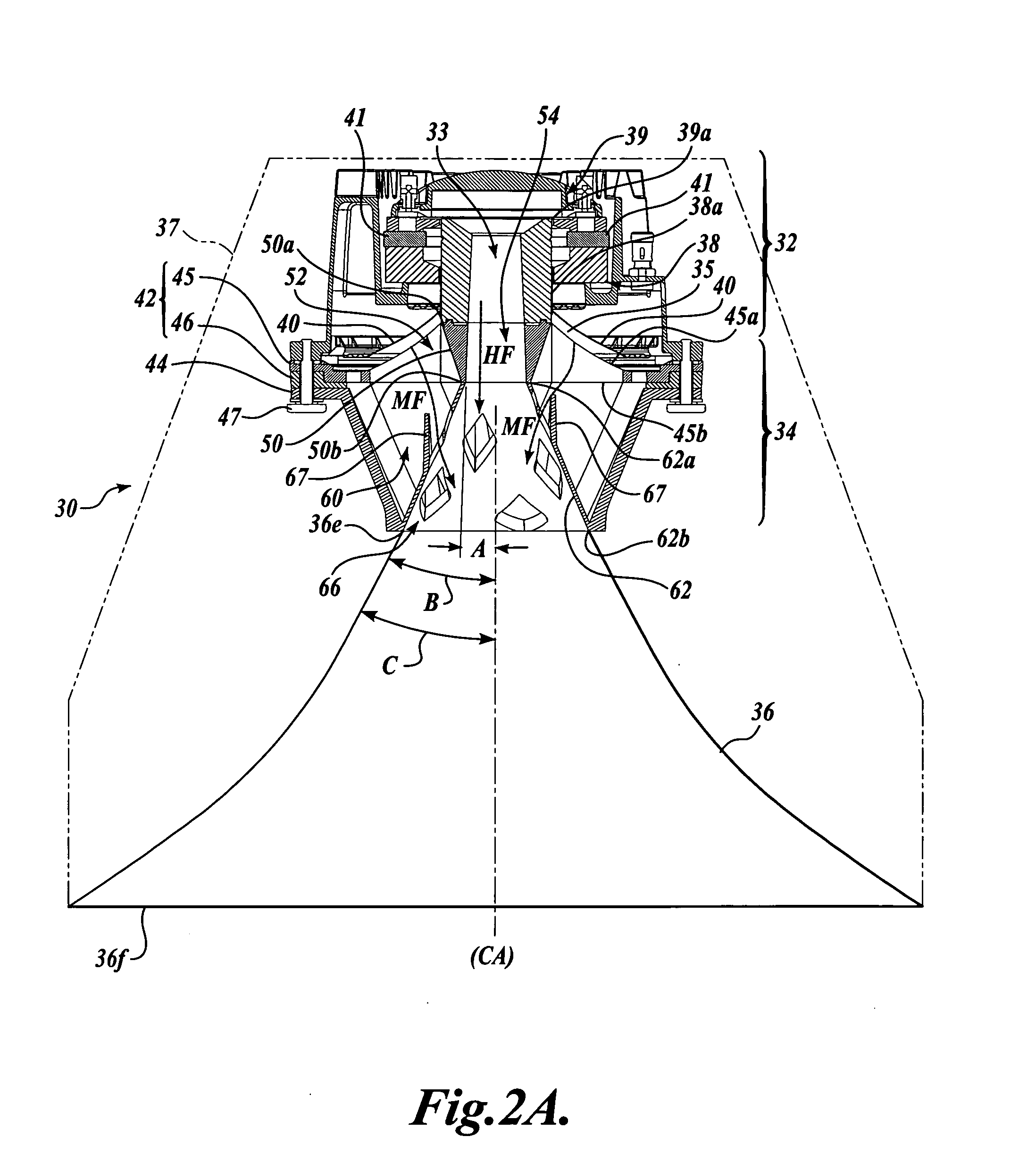Coaxial mid-frequency and high-frequency loudspeaker
a loudspeaker and high-frequency technology, applied in the field of loudspeakers, can solve the problems of inherently low q of the coaxial transducer, destroying the temporal coherence of the original signal, and implementing such coaxial transducers in loudspeakers
- Summary
- Abstract
- Description
- Claims
- Application Information
AI Technical Summary
Benefits of technology
Problems solved by technology
Method used
Image
Examples
Embodiment Construction
[0026]FIGS. 2A and 2B illustrate a coaxial mid-frequency (MF) and high-frequency (HF) loudspeaker 30 formed in accordance with one embodiment of the present invention. The loudspeaker 30 is configured to receive an electrical signal and transmit an acoustic signal through a transmission medium (e.g., through the air), and includes a coaxial transducer 32 and an acoustic transformer 34. The coaxial transducer 32 is a combination of two or more coaxially arranged drivers that each receives an electrical signal and produces an acoustic signal representative of the electrical signal, while the acoustic transformer 34 serves to match the coaxial transducer 32 to the transmission medium. As shown, the loudspeaker 30 may also include a horn 36 arranged adjacent to the acoustic transformer 34. As best shown in FIG. 2B, which is a front view of the loudspeaker 30, the horn 36 may have a rectangular mouth defined by four sidewalls 36a-36d. As will be apparent to one skilled in the art, the ho...
PUM
 Login to View More
Login to View More Abstract
Description
Claims
Application Information
 Login to View More
Login to View More - R&D
- Intellectual Property
- Life Sciences
- Materials
- Tech Scout
- Unparalleled Data Quality
- Higher Quality Content
- 60% Fewer Hallucinations
Browse by: Latest US Patents, China's latest patents, Technical Efficacy Thesaurus, Application Domain, Technology Topic, Popular Technical Reports.
© 2025 PatSnap. All rights reserved.Legal|Privacy policy|Modern Slavery Act Transparency Statement|Sitemap|About US| Contact US: help@patsnap.com



